

UT Dallas’s Animation program provides an opportunity for students to take part in a simulated animation studio experience called Animation Lab. With faculty guidance, a crew of forty students produce a two-minute CG animated short film over the course of two semesters. Our vision for Animation Lab was to structure a classroom where faculty’s ideas took a back seat to student-driven creation. Although we, as faculty, provided the schedule and pipeline structure, students drove the content and daily production themselves. This past year, we challenged students to create a short film centered on an emotion they experience regularly, and they chose anxiety. The resulting CG animated short film, Drift, features an internal headspace where a bubble travels through an ever-changing environment, in hopes of reaching a place of calm and safety. While the students are proud of their resulting film, we as faculty are most proud of the experience they will carry with them to their next creative endeavor. In this talk, we discuss the problems we encountered in trying to emulate a “real-world” experience, the struggles we faced in providing structure while letting students drive, and the space we conceived to help students manage creative conflict on their own. Keywords: Education, Industry, Creative Process, Cross-Discipline, Narrative filmmaking, CG filmmaking.

|
As a Senior Lecturer at the University of Texas at Dallas School of Arts, Technology, and Emerging Communication, Kara Oropallo focuses on creative management and the art (and joy!) of managing artists. In addition to teaching, she facilitates management workshops and training programs with numerous studios, including DreamWorks Animation, Paramount Animation, and Skydance Animation. Kara’s previous industry experience includes more than 12 years at DreamWorks Animation, where she worked in production on such films as The Croods and Rise of the Guardians. She also produced the behind-the-scenes documentary Rise of the Guardians: Creating an Epic. More recently, Kara worked in studio management on such films as The Boss Baby and Trolls. Originally from Michigan, Kara graduated from The Ohio State University with a BA in Film Production and Screenwriting and a minor in Women in Film.
|
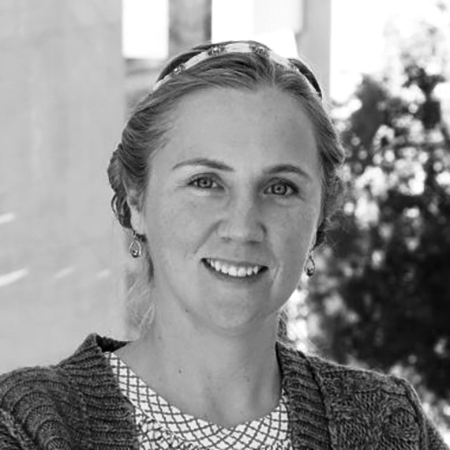
|
Monika Salter comes to UTDallas School of Arts, Technology, and Emerging Communication from the animated feature film industry, where she spent 14 years working in the areas of Character Effects and Lighting. Known as Monika Sawyer in the professional world, her film credits include Blue Sky Studios’ Epic, Rio, Horton Hears a Who, and several Ice Age sequels including Ice Age: Continental Drift and Ice Age: Dawn of the Dinosaurs.Salter has spent the last six years working with Dallas-based film studio Reel FX Creative Studios as Character Effects Supervisor. Here, she has helped the studio establish and grow a new Character Effects department for their latest feature film pipeline. Her film projects with Reel FX include Free Birds, Rock Dog, and their Golden-Globe nominated film Book of Life.Salter received her BA from the University of Wisconsin, Stevens Point, and an MFA in Computer Art from Savannah College of Art and Design in Savannah, Georgia. |
In this talk we will present the student animation production of the School of Arts, Technology and Emerging Communication (ATEC) at the University of Texas at Dallas. Since 2013 the Animation pathway has created a one-year Animation Lab that simulates an animation studio, following a pipeline, with clear definition of roles and responsibilities for each student. The faculty mentors are alternated every year and the students pitch and vote on the best story ideas to be developed into an animated short. The program consists of seven full shorts and one teaser preview of the latest short in production called Stargazer (2019). Keywords: ATEC, UTD, animation lab, digital animation, student showcase

|
Sean McComber is an Assistant Professor at the University of Texas. His focus within the school of ATEC is in the discipline of animation. He holds a BFA in Computer Art from the Savannah College of Art and Design, and an MFA from the University of Texas at Dallas. Before joining the ATEC faculty, Sean McComber worked for the visual-effects studio Rhythm & Hues as a character animator, lead animator, and supervising animator on numerous feature films. He has also worked in the video game industry as a senior cinematics animator at Sucker Punch Productions.
|
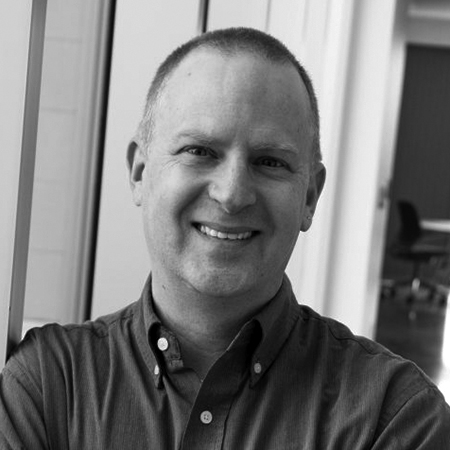
|
Eric Farrar is an Associate Professor in the School of ATEC at UT Dallas. Eric’s interests center around elegant motion graphic design and techniques for combining music and animation. With a background in music and visual communication design, he completed an MFA in Design from The Ohio State University. He worked as a character rigger at Rhythm & Hues creating internal motion structures and control systems for digital characters. Films on which he worked include Night at the Museum and The Chronicles of Narnia: The Lion, Witch and the Wardrobe. He currently teaches courses in 3D animation and in motion graphics. |
Since the early 19th century, humanity has been dazzled by animation. The desire to capture life in motion predates the invention of animation, manifesting itself in a variety of forms from sequential cave drawings, to narrative photography studies, to the rhythmic, repetitive imagery of ancient Greek pottery. Although often associated with children’s media, creators are finding new bridges between animation and other sectors of the media landscape. As a recent graduate of a fine arts program, I am captivated by the intersection of art and culture, and how it shapes our understanding, biases, and outlook on life. This paper explores the possibilities of animation’s relationship to technology and its effects on the social sphere. As an ever-evolving technology has already become an integral part of American daily life, how can we spur animation – specifically interactive modes of animation, such as reactive sculptures and installations – to become a form of therapy and a mode of activism that allows people to express themselves when words or static images fail? This essay seeks to explore the potential of animation in abstract methods, explicitly an investigation into the open-source, user-based platform of Arduino. Animation – a reflection of the motion and activeness of life – should reach out into the world, sparking new ideas for cross-platform communication and redefining social impact. Acknowledging animation’s physical presence in the world, allows us to reconsider the influence of the audience and invites us to reevaluate how we define those audiences. Keywords: Interactive Animation, technology, Arduino, social impact.
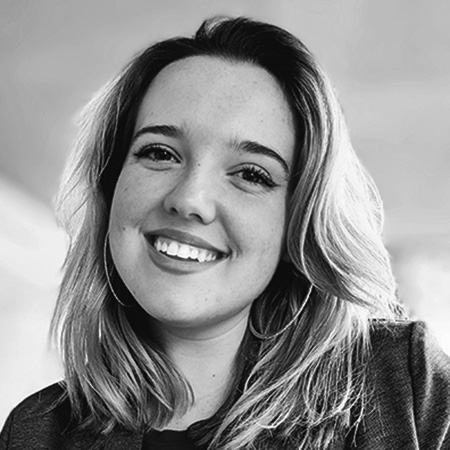
|
Abbigail Wilson is a recent graduate of the University of Louisiana at Lafayette who first experimented with interactive animation during the production of her undergraduate thesis installation piece. She got involved in the “Make” community, experimenting with Arduino microprocessors and sensorial input, which sparked her interest in the marriage of technology and art. Her research seeks to redefine the purpose of animation, considering its uses beyond the scope of entertainment to a cultural context outside of the screen. Her favorite pastimes include. Her favorite pastimes include saving her Photoshop file under ill-fitting titles and tending to her soldering burns. |
The “Suspension of Disbelief” can be defined as one of the major assets of a successful visual narrative in animation. The way in which motion, performance and sound are collectively delivered to the audience will be the key factor in convincing them that the audio-visual experience can be accepted as believable or, depending on the content, to be true. Likewise, educators try to establish a bond with their audience and, at times, need finding a way to overcome their resistance against focusing and paying attention. This article aims to offer animation as a way of thinking about delivering educational content and as skill that needs to be instilled and developed. Sequential Storytelling competency is the core asset of almost every form of visual narrative and can be defined as the sequential visualization and/or narration of events within a chosen time span. Sequential Thinking emphasizes the relevance of cause and the effect at a given moment, and of the notion of precedent and subsequent. We will be asking the following questions: What is the current situation? What will happen next? What will follow? Refining the answers we provide to these questions will further deepen the reasoning process and help develop the notion of sequential thinking, which consists of not just considering a single aspect or a moment of the case but rather of a collection of continuous and dependent activities which rely on and effect one another within the chosen timeframe. In conclusion, utilizing animation in developing and delivering course content in a an expressive as well as in an interesting way will be beneficial to all educators because of the freedom that it provides over content development. Keywords: Animation, Education, Sequential Storytelling, Sequential Thinking, Suspension of Disbelief, Way of Thinking.
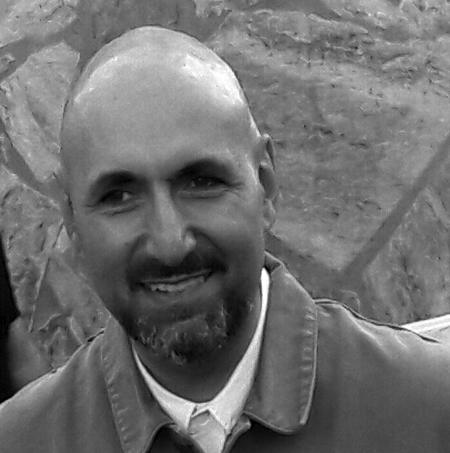
|
My fascination with the “Aesthetics of Motion” and “Drawing” were the major factors in my decision to study Animation. I attended the Classical Animation Program at the Vancouver Film School in 1999. My student film “The Fall” has been screened at various International Animation Festivals and has been the major influence in my quest for establishing himself as an Animation Filmmaker. In 2006 a new chapter to my career in Animation began when an opportunity to teach Animation at the Academic level presented itself. Through the years I took pride in and strongly felt the privilege of generating a sense of enthusiasm and an assurance of confidence in creative minds through Animation. |
Although VR is often used as an independent technology-oriented medium, this paper hopes to strip its high-tech dimension and regard it as a new form of documenting, especially to regard it as new animated documentary. As a new immersive experience, VR offers participants a way to be closer to the interviews’ environment. These experiences demonstrate the possibility of a new methodology for reconstructing memory: The setting of the interview often directly establishes time, place, characters and discourse. It is important to realize that in VR, time and space as well as interviewees’ and speakers’ presence have the prospect of being visually re-established. The 360 degrees interview thus becomes a container of memory, constructed as a new chronotope. The VR Film “Grenfell: Our Home,” (2018) commissioned by Channel 4, is one such new animated documentaries, one that visualizes in virtual reality Grenfell Tower (London, U.K) before the terrible fire that took place in June 2017. Through several interviews, this VR work presented the building as a cultural community and addressed the hope of rebuilding a lost home. Since collaborating with Aardman in the 1980s, Channel 4 has produced a series of successful clay (stop motion) animation based on interviews. This new Channel 4 project expands the scope of interviews through memory-telling by bringing it into the realms of VR. Five interviews offered a dynamic process of remembrance, revisiting, re-imagining, and rebuilding a lost home. All the interviewees recalled the first impressions about their flat and the reasons why they choose this space to be their home. From this VR exploration, the audience can better understand how this high building provided a geographical sense of identity with the city and mediated a dialogue between “me” and London. This VR work reconstructs home as a chronotope of memory. The burned-out building is now re-displayed from the outside to the inside. “Grenfell: Our Home,” focuses on memory as a force to rebuild a lost home and re-examines the tragic event through multiple perspectives. Keywords: VR Memory, Animated Documentary, Interview, Rebuilding, Chronotope.
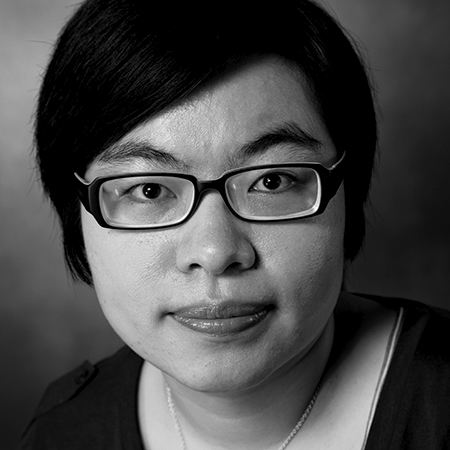
|
Chunning (Maggie) Guo teaches New Media Art and Animation at Renmin University of China. She was a creative director for Vancouver Film School, a visiting artist to Central Saint Martins, London, and a resident artist at Centre Intermondes in France in 2014. She earned her PhD in independent animation in 2015 and has presented her scholarship at important international conferences and her animated artwork, “Ketchup” (co-created with Baishen Yan) has been exhibited at and collected by prestigious international festivals and galleries. She was the recipient of NETPAC Award in 2015 Busan International Short Film Festival of South Korea and selected by the Sino-Dutch scholarship as a visiting scholar for a year in Radboud University led by Prof. Asifa. Her cross-disciplinary research, The Archaeology of Memory: The Comparative Studies on Animated Documentary hopes to connect Animation, Psychology, History, Communication and Culture Cognition.
|

|
Yuanbo Zhong is the Director of Sichuan Province Animation and Comics Research Centre. He is a professor of the School for Arts and Film at Chengdu University in Chengdu, China. He holds a Master degree in aesthetics from Southwestern University in Chongqing and his research is in 3D animation and games. He has cooperated in several projects including Shang Shi (animation), The Adventure of Yake (animation and comics), as well as two cooperative projects with Thailand University: Wal Rally (travel app) and Ancient Sichuan Legend (2D game). In addition, he curated and organized conferences including the 2015 Animation Academic Forum in the South Provinces of China, and the Annual Chinese Animation Studies Conference in Chengdu. |
Neuroanimatics are animated movies that work the brain’s neuroplasticity for the transformation of visual thinking and feeling through an emotional reflective-resilient learning. We present animation as a contemplative art/practice for personal growth and creative learning. In this article we present as artists and educators, a holistic approach that considers the visual narrative as a means of mindful communication and intimate transformation that re-frames a story to restore balance and gain insight. Through the creative process, personal capabilities such as resilience and compassion are developed, opening our heart, as we simultaneously work with the symbolic and metaphorical aspects of visual storytelling, which opens our mind. Here re-creating goes beyond the production of artistic objects to the construction of deep human meanings. The goal of neuroanimatics is to return to the origin of oral transmission, the root of resilient knowledge and ancestral wisdom, using animation as an innovative and intuitive language. Our methodology is based on experiential, intercultural, and intergenerational practice through regulated courses and specific workshops carried out in Europe, Peru, Mexico, and Japan, whose positive results have been evident in the different cases of application. We observe that linking emotional intelligence, neurosciences, mindfulness, arts, and animation causes conscious learning to happen more fluently from creativity, therefore influencing the neuroplasticity and favoring transformation towards well-being. We learn from life by recreating life in a multicultural world full of stories to tell, and, thus, to animate. Keywords: Neuroanimatics, transformation of thinking and feeling, intuitive language, visual storytelling.

|
Inmaculada Concepción Carpe Pérez MFA and PhD candidate; visual artist-animator-filmmaker, and lecturer and PA in film festivals in Los Angeles, California. Mediterranean born, Inma is specialized in 2D animation, short formats, and pre-production. Her short films and artwork reflect an interest in collage, textures, and mix of media to exalt human feelings through visual narrative by engaging animation with sciences and education. She’s currently working and researching animation as a media of communication and transformation, connecting neurosciences and mindfulness with filmmaking, and is currently an international PhD between the Polytechnic University of Valencia, Spain and The Animation Workshop, Denmark. |
What can, in the sense of gaining knowledge, “art” or “artistic research,” do in the audiovisual media? How could we create a creative relationship between theory and designing practice? Why has the role of the arts always been research with principle open, unpredictable outcome? Why should debates about artistic Initiate research on concrete artistic projects? To what extent can “Autopoiesis” be transferred to collective audiovisual arts? In the exemplary artistic research project TESTeLAB & Guests, the traditional media are transposed into the digital in order to make them productive for a “Future Cinema” to develop further. Experimental research into the movement, time and sound potential serves the expansion of cinematographic experience and questions the filmic building blocks under new conditions.Keywords: Pre- and Future Cinema, Experimental Hybrid Arts, Expanded Animation Worlds, Synthesis of the Arts, Gesamtkunstwerk
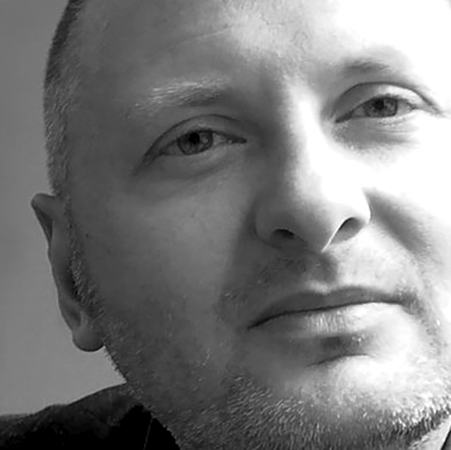
|
Frank Geßner was born in Würzburg, Germany. He studied Art (Sculpture, Painting) and Art History in Stuttgart and Berlin and was Guest Professor at the China Academy of Art, Hangzhou, Jilin Animation Institute Changchun, China and, the Berlin University of the Arts. He was awarded the 2002 and 2003 “Good teaching” award from the University of Arts Berlin. In 2004, Geßner was appointed Professor of Visual Arts for Animation at the HFF Konrad Wolf Potsdam-Babelsberg. Between 2006 to 2009, he was also Vice President for Teaching, Research, and Development at that institution. Frank Geßner founded the *Atelier Berlin Production in 2005 in order to work on practice-based and practice-led artistic research and pilot projects. In 2008 he co-founded the Institute for Artistic Research (IKF). Since 2009, Geßner is Professor for of Theory and Practice of Bildkunst / Visual Arts at the Film University Babelsberg Konrad Wolf. He offers lecture essays and workshops in Germany and abroad. |
This is the third year that a course titled “Animated Perspectives” has been a part of the curriculum at Loyola Marymount University in Los Angeles. It was designed to meet a required component of LMU’s ‘New Core,’ having an attribute in Engaged Learning which involved outreach and awareness of issues outside the classroom. The course was developed by the author of this paper in collaboration with the instructor, Sapphire Sandalo, an alumna of LMU who had achieved a degree of stature as an online media personality, as host of a YouTube show and commentator on the animation industry. “Animated Perspectives” involves studies and inquiries of socially relevant topics that are explored through the lens of animated media, resulting in recorded podcasts that students produce as assignments. Owing to the allegoric nature of animation, which frequently employs fantasy environments and anthropomorphic characters, culturally sensitive topics can be broached and scrutinized in new ways by understanding how they can be re-imagined or depicted in these contemporary media frameworks. The history of animation has long been fraught with complicity in reinforcing stereotypes, but a promise of modern animated narratives is how visual allegories can challenge viewers and provide new ‘animated perspectives.’ Beyond the course serving as a curricular growth experience, a goal is to inspire more student filmmakers to consider ways that their own creative work can make use of inventive, thought-provoking narratives, and diegetic constructs. Keywords: Curriculum, Animated Perspectives, Social engagement, Podcast, Allegory.
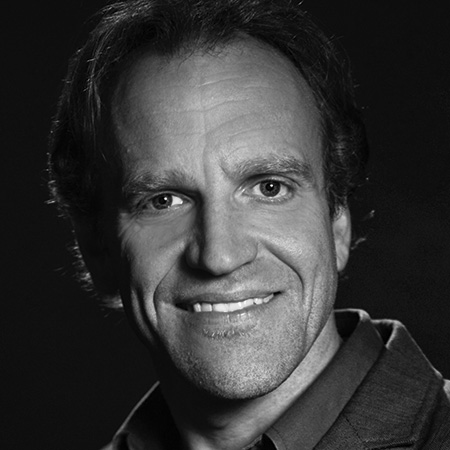
|
Tom Klein is Professor and Chair of Animation at Loyola Marymount University in Los Angeles. He curated the critically acclaimed exhibit Woody Woodpecker & The Avant-Garde at Laband Art Gallery. He is a columnist for Cartoon Research. His articles have appeared in such publications as Animation: an Interdisciplinary Journal, Griffithiana, Animation Journal, and Animation Studies, among others. He catalogued UCLA’s Walter Lantz archive and contributed to the Italian anthology, What’s Up, Tex? Il Cinema di Tex Avery, published by Lindau. His chapter, “Evoking the Oracle,” appears in Animated Landscapes: History, Form and Function published by Bloomsbury. Tom was a consultant for Universal Cartoon Studios during the production of From the Earth to the Moon for HBO (1998.) |
Astronomy is widely popular and provokes a sense of wonder. It addresses profound questions such as: who are we, how did we get here? When astronomy joins with art, it becomes a platform to explore ideas with artistic/scientific awareness, which is crucial to understand our physical world. In contrast, many decisions are being made at a governmental/societal level involving scientific issues, which are based on incorrect or biased information, including so-called “fake news”. How, as educators, do we promote a worldview based on objective facts rather than appeals to emotion? Against this backdrop, we are teaching an astro-animation class at MICA that brings together animation students and NASA scientists in collaborative teams. Unlike the direct visualizations typically produced at NASA, we use poetic metaphors and other approaches which can move an audience in different ways. Our goals include bringing scientific education to artists, encouraging scientists to interact with artists, and share their research with a broader audience. The animations are available on the internet (astroanimation.org) and are being shown at museums, scientific conferences, STEAM festivals, in classrooms, and at science fiction conventions. Keywords: Science, STEAM, Animation, Education, Society, Outreach.
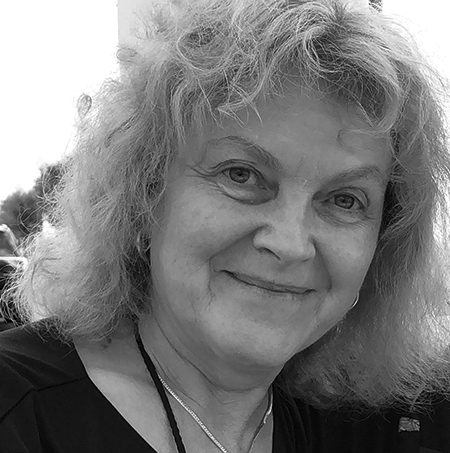
|
Laurence Arcadias is a French/American animator and she is the chair of the animation department at the Maryland Institute College of Art (MICA) in Baltimore. She has directed and written several short films and won awards at numerous international film festivals. She moved to the US through a Lavoisier Scholarship from the French government and became Animator in Residence at Apple’s Advanced Technology Group. She taught at City College of San Francisco, California College of Arts, University of California- Berkeley, San Francisco Art Institute, and the San Francisco Academy of Art University prior to joining MICA.
|
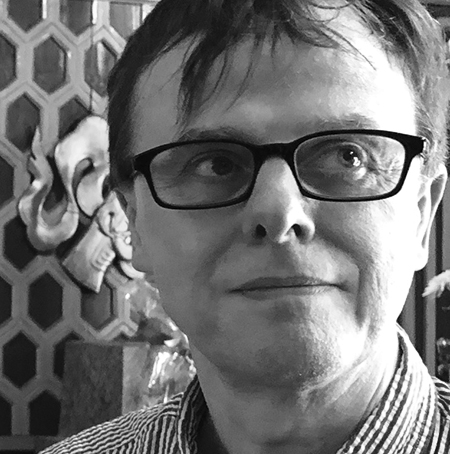
|
Robin Corbet obtained a PhD in astrophysics from University College London, then continued his research at Oxford University, the Japanese Institute of Space and Astronautical Science, and Pennsylvania State University. Now a Senior Research Scientist at the University of Maryland, Baltimore County, based at the NASA Goddard Space Flight Center, he works with the Fermi Gamma-ray Space Telescope. He researches binary star systems containing black holes or neutron stars where incredibly strong gravitational and magnetic fields produce X-rays and gamma rays. He also explores new approaches in the Search for Extra-Terrestrial Intelligence (SETI). At MICA, Corbet co-teaches the astro-animation class. |
The Fish Project is a collaborative research project the aim of which is to experiment with public interaction and engagement through animation. Born from the idea of inviting people to interact with and keep alive a virtual pet – inspired by the handheld popular toy Tamagotchi digital pet (c. 1997) – the project extends individual experience to that of a “community of interpreters” (C.S. Peirce) whose habits of interaction sustain the “life” of a virtual fish. In its early stages, the project is evolving according to the contributions and diverse backgrounds of its collaborators. While the original idea imagined a strictly virtual goldfish in a fish bowl, the current concept mobilizes a physical doppelgänger as an origami fish placed on a magnetic floating platform as the trigger for interaction. Sensors embedded in the tank activate the digital version of the paper fish when an interested passerby pauses in front of the tank. Continued interaction with individuals animates the virtual fish, whose degree of vitality manifests according to different fish “attitudes.” We are motivated by the following questions: How might an interactive origami fish and its digital double invite interaction in individuals? How might individual interactors become a group of longer-term interactors who cooperate to keep the virtual fish animated? and How might the domains of the virtual and the actual evolve together and through a kind of mutual responsiveness? In this presentation we propose to showcase the current state of the project and the discoveries and progress made at different stages of development. Keywords: animation, interaction, tamagotchi, public engagement, design, origami, digital animation.
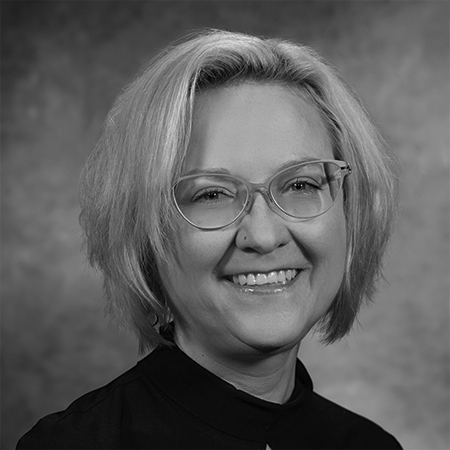
|
Heidi Rae Cooley is an associate professor of Arts, Technology, and Emerging Communication and co-director of the Public Interactives Research Lab at the University of Texas at Dallas. A media theorist, she integrates theory and practice to investigate emerging “smart” technologies and the habits they engender, as well as how those technologies might serve the purposes of habits-change. Her monograph, Finding Augusta: Habits of Mobility and Governance in the Digital Era (2014), along with its digital supplement, Augusta App, received the 2015 Anne Friedberg Innovative Scholarship Award from the Society for Cinema and Media Studies. Recent essays have appeared in Applied Media Studies (Routledge 2018) and Making Things and Drawing Boundaries: Experiments in the Digital Humanities (Minnesota 2017), as well as Journal of Television and New Media (2016). She is working on a second book project tentatively titled “Critical Interface Design.”
|
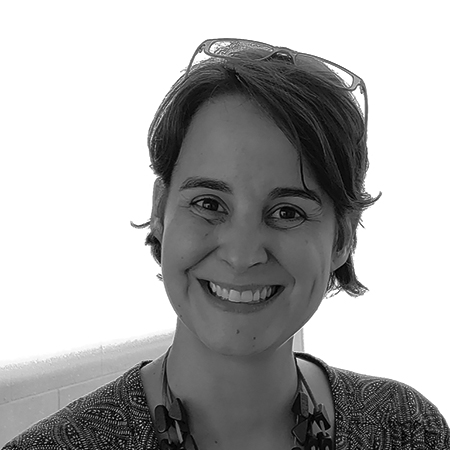
|
Christine Veras is a Senior Lecturer at the School of Arts, Technology and Emerging Communication at the University of Texas at Dallas. As a scholar and artist originally from Brazil, she researches the integration of physical and digital technologies to explore the multimedia possibilities of animation. She completed her PhD at the School of Art, Design, and Media at Nanyang Technological University in Singapore. Among her works, Christine invented a new international prize-winning and patented animated illusion device called Silhouette Zoetrope, which is now part of the permanent collection of the Children’s Museum in Dresden, Germany and of the Swiss Science Center Technorama in Winterthur, Switzerland. Her fields of expertise combine theory and practice, including disciplines related to History of Animation, Cinema and New Media, as well as Experimental Animation, Interactive installations, and Graphic Design. |
The Fish Project is a collaborative research project the aim of which is to experiment with public interaction and engagement through animation. The project stems from an idea conceived by Dr. Heidi Cooley and was developed in collaboration with Dr. Christine Veras. As the project grew, we, as students, joined the collaborative effort to work specifically on the asset creation and animation of the digital version of the origami fish. In this talk, we will share our perspectives about the work, explain the challenges encountered, and present the creative solutions developed through the project documentation, showcasing the animated results. The asset creation process started by studying the folds and creases in the physical origami fish to better understand how to create the virtual geometry needed for the interactive folding mechanism, and by getting the desired finished model necessary for computer animation. We also created controls that allowed us to animate this model and to render it in a more believable way. The animation process began by acquiring a live Koi fish for referencing movement and interactivity. Our daily routines with the Koi fish were in keeping with the typical types of interactions necessary to keep a fish alive. Observations of these interactions helped to determine how the virtual Koi would react. These responses were translated into different animated fish attitudes. By studying recorded video of the Koi and live drawing illustrations, and by reviewing existing animations, we were able to find key poses for the animated Koi modeled in Autodesk Maya. Keywords: animation, 3D modeling, rigging, design, origami, digital animation.
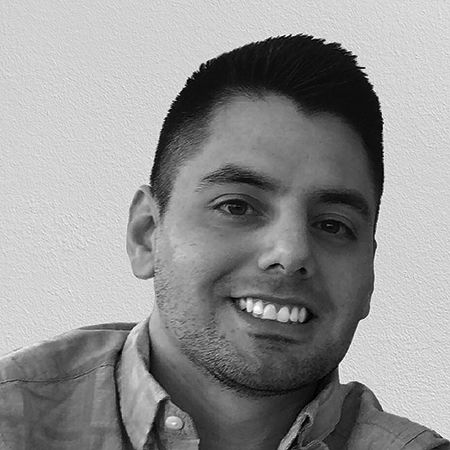
|
Julio Soto is a senior animation student at the School of Arts, Technology and Emerging Communication and serves as the Media Coordinator for the Animation Guild at the University of Texas at Dallas. He has served as an Animation Judge for the Business Professionals of America and as a VR Specialist for the EarthX Earth Day Expo. Julio has worked as a Graphic Designer/Motion Graphics Artist intern for the Texas AirHogs, an independent professional baseball team. He is currently an animator on the latest Animation Lab project, Stargazer, an upcoming sci-fi action CG animated short which will showcase at the end of 2019.
|

|
Samuel Price is a senior Student of Animation with an emphasis in 3D Asset Creation and Lighting at the School of Arts, Technology and Emerging Communication at the University of Texas at Dallas. He has competed in each of the School’s three 48-hour Animation Blitz Challenges, collaborating on a team of three to make a 10 second animation within the designated time constraints. He is currently the Rigging Lead on the latest Animation Lab project, Stargazer, an upcoming sci-fi action CG animated short which will showcase at the end of 2019. |
The Little Rock Central High School Building for the 60th Anniversary of the Desegregation Crisis. For the 60th anniversary of the Little Rock Central High School (LRCHS) Desegregation Crisis, a projection mapping event was the capstone performance for a week of events commemorating the Little Rock Nine and celebrating the School’s building and surrounding neighborhood. In 1927 LRCHS was named “America’s Most Beautiful High School” by the American Institute of Architects. In 1957 the school was pulled onto the world stage as nine African American students were denied entry at the start of the academic year. The purpose of the projection mapped video was to celebrate the architecture of the building, pay tribute to its past, and look forward to its future. Projection mapping on the building was chosen as a celebratory event because it is a public art form that hasn’t been seen on a large scale in Arkansas, and because the structure is uniquely located: the audience must come to the school to experience it. The piece integrated themes of the construction of the building; the school’s history through academics and athletics, its changed racial and political makeup, and the administration’s and student body’s dedication to celebrating diversity. This presentation will explain the process of fundraising and developing relationships with the LRCHS administration and the national park, the way the animation content was conceived, the logistical concerns for projection mapping; and how the projection mapping event was integrated into the multiple art-oriented commemoratory event. Keywords: Education, Social Impact, Activism, Projection Mapping, Animation Production, Public Art

|
Scott Meador is an associate professor of Art at the University of Central Arkansas. He has an M.S. degree in Computer Graphics Technology and an M.F.A. degree in Theatre Scenography, both from Purdue University. For the last 20 years Scott has been teaching courses in 3D animation, motion graphics, storyboarding, film post-production, and fine arts. Interdisciplinary endeavors are the central component of his academic career. Example projects include: a simulation and visualization of the 9/11 attack on the Pentagon; motion capture dance performances; film productions; and theatrical productions with projected scenery. Professionally, Scott works on various projects involving 3D animation, motion graphics, and visual effects, and is often involved with live events such as concert graphics for Metallica, Brad Paisley, Peter Frampton, Darius Rucker, and the Nashville Predators’ Stanley Cup Finals. |
In Spring 2019, faculty and students from Carnegie Mellon University’s Real Time Animation and Experimental Sound Synthesis courses collaborated with the Carnegie Public Library of Pittsburgh to create a mobile-Augmented Reality (AR) art walk experience within the library’s Oakland branch in Pittsburgh, PA. The project represents an investigation in pedagogy, practice, and interdisciplinary collaboration between curricular art and music programs and a public institution to explore content of the library’s special collections and architectural design through animation, immersive media design, and site-specific sound installation. Through variations of mobile-AR animation and spatial sound design, students were asked to examine site-specificity and the historic nomenclature of the Carnegie Public Library as a Palace of Culture, which is considered as an organic and perpetually transforming site for learning — a shifting manifestation and embodiment of the learning processes it supports. Creative research for this pilot exploration involved a series of experiences that engaged distinct collections within the library. These experiences were linked together through a mobile-AR app called Carnegie’s Monocle, which bridges animated media and site-specific sound installation through a guided art walk. The project draws upon the distinctive strategies of artist Janet Cardiff, whose site-specific art-walks are critically and imaginatively engaged within their particular surroundings. In our case, the mobile-AR art-walk guides participants through the library with animated image and sound experiences drawn from specific locales and collections. Our project culminated in an exhibition at the Carnegie Public Library, juxtaposing past and present at a site of historic and cultural significance. We anticipated that the structure of the artwalk, framed through mobile-AR experience, would support several learning objectives: collaboration across diverse fields of interest; discovery and engagement with the library’s historic and cultural collections; curatorial narrative methodologies; and exposure to a breadth and depth of technical facilities involved in the design and production of a complex mobile-AR experience.
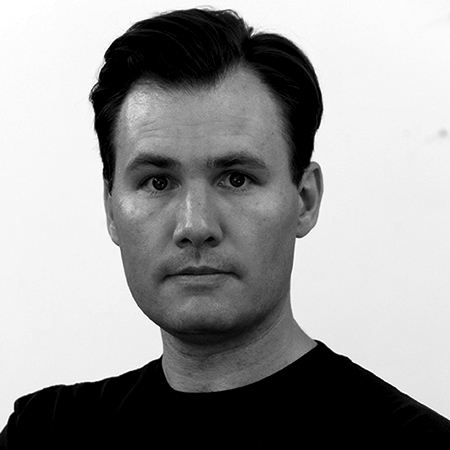
|
Johannes DeYoung is an artist whose work blends computer animation, creative coding, and experimental material processes. His works are exhibited internationally and featured in publications, including The New York Times, The New York Post, and The Huffington Post. DeYoung is appointed Assistant Professor of Art at Carnegie Mellon University. From 2008—2018 he taught animation and moving-image courses at Yale University School of Art, where he was appointed Senior Critic and Director of the Center for Collaborative Arts and Media, and Principal Investigator for the Blended Reality immersive media research initiative. He received his MFA from Cranbrook Academy of Art. |
Visual Communication and Cultural Landscape: Ethnography Writing & Information Presentation in Animated Films. In the era of “image reading,” visual culture becomes the main content of the contemporary social media landscape, demonstrating its strategic situation on multiple levels of culture including the impact on the human senses, technology and communication. The role of anthropological images in ethnographical writing and the communication and presentation of cultural information has changed since the days “instrumentalism” was the main disciplinary paradigm. Images have become intrinsic to “methodology” and to “thought theory.” In the context of anthropology, new animation media has a huge impact on the way of recording, writing and presenting ethnographic research. Using the conceptual framework provided by visual anthropology, this paper concentrates on the Thai animated film Khan Kluay. The presentation discusses and analyses how the animated film describes, presents, and communicates cultural information. In addition it argues that animation eventually completes ethnographic writing and successfully achieves the narration of national memory by using visual communication within a specivic cultural purview. Keywords: Animation, visual culture, anthropology, ethnography.

|
Li Gang is an Associate Professor & Graduate Supervisor at Chongqing University, School of Arts, China. He was a Visiting Scholar at the University of Southern California, School of Cinematic Arts (2012-2013). He received his Master’s Degree at Dong Seo University in Busan, South Korea (2006). For the last five years, Li Gang’s studies have focused on the intersection of animation arts, visual anthropology, digital media design and culture industry. He has published more than ten academic papers and has guided students in creating different animated short-films. His work has earned him numerous national awards. |
The Nigerian animation industry witnessed a slow-paced development owing to challenges ranging from lack of expertise to unconducive environments for sustainability. The majority of Nigerian animators were autodidacts, and the animation scene in the country had been dominated by the advertorial content produced by South African studios. However, the situation is gradually changing as new animation studios led by local animators who acquired skills mainly in South Africa, Europe, and America, are springing up almost every six months in Lagos, the commercial center of the country. Animations’ plot and rendition style now emphasize local, indigenous stories culled from folklore and African cosmology. This revolution has been championed by young visionary animators whose aim is not only to document contemporary happenings in animation form but also to preserve cultural and traditional ideals. This paper explores the new trend in the Nigerian animation industry in terms of content, quality and quantity. It will analyze the work of selected animators’ works in order to reveal the current situation of the industry and the viability of the revolution in regard to audience acceptance. Keywords: Animation, Nigeria, African Folklore.
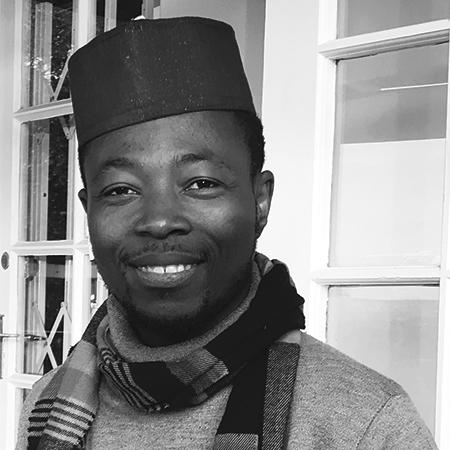
|
Ganiyu is currently a Postdoctoral Fellow with the Arts of Africa and Global Souths Research Program, Department of Fine Arts, Rhodes University, South Africa. He holds a Ph.D. in Art History from the University of Lagos, Nigeria with a focus on contemporary art, new media, satire and cartoons in relation to spatial negotiations, transnationalism and cultural politics. He received the prestigious University of Lagos Best Researcher Award in Arts and Humanities in 2011 as well as a research grant to conduct part of his Ph.D. research at the African Studies Centre and Special Cartoon Collection Unit at Michigan State University in 2015. He was recently awarded the University of Edinburgh Catalyst Fellowship to attend the 2019 edition of ECAS in Edinburgh, Scotland. Currently, he serves as project advisor on the African Humanities Research Council and as the Secretary of Cartoonists’ Association of Nigeria (CARTAN). As a scholarly writer and a practicing political cartoonist, Jimga (cartoon signature) has both local and international exhibitions to his credit. |
APES is endorsed by HEART UK, the Animation Academy (UK) and the School of Design and Creative Arts, Loughborough University.
The symposium is made possible by the generous support of the Texas Tech Office for Research and Innovation, the J.T. & Margaret Talkington College of Visual and Performing Arts, the Humanities Center at Texas Tech, the Ryla T. & John F. Lott Endowment for Excellence in the Arts through the School of Art, the Art History Area in the School of Art, the Tech Art History Society (TAHS) and the Society of Animation Studies (SAS).

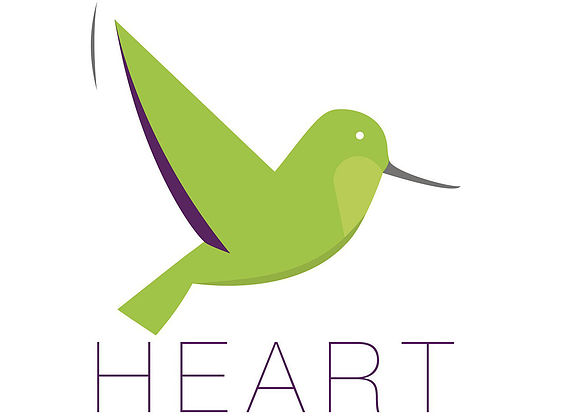


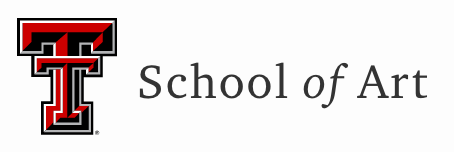
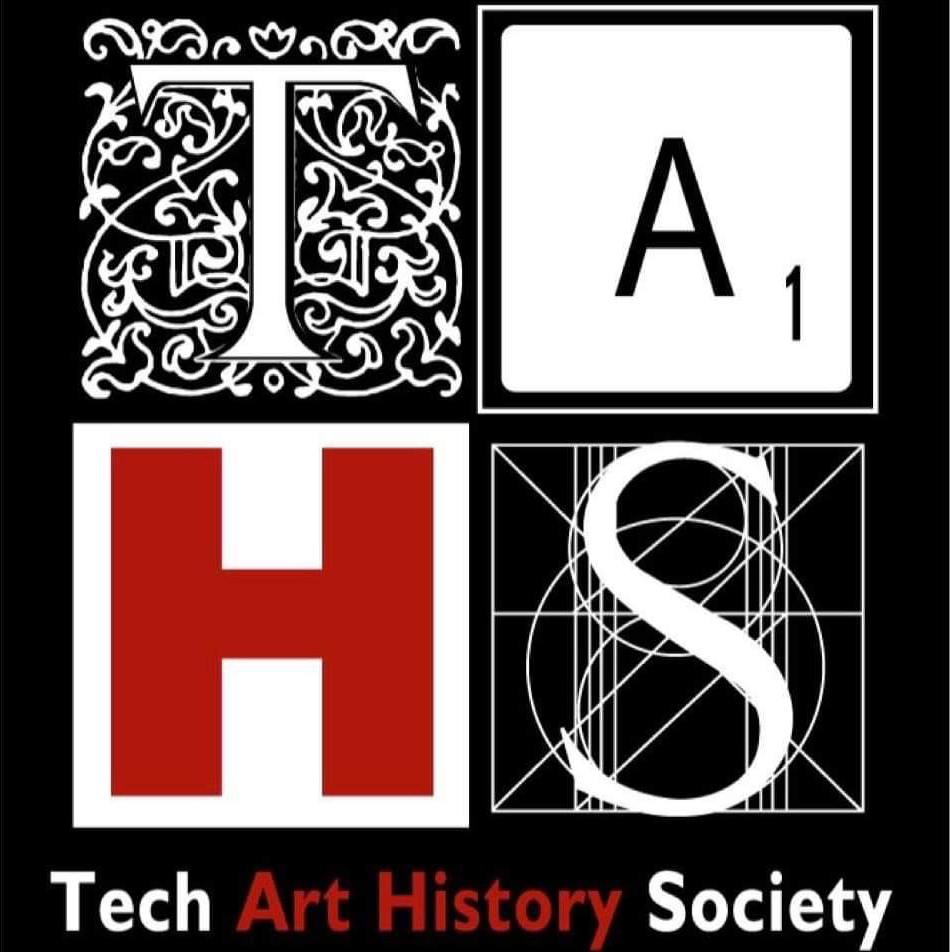

USA: Jorgelina Orfila (TTU), Francisco Ortega (TTU)
U.K: Roberta Bernabei, (Loughborough University), Melanie Hani (HEART)